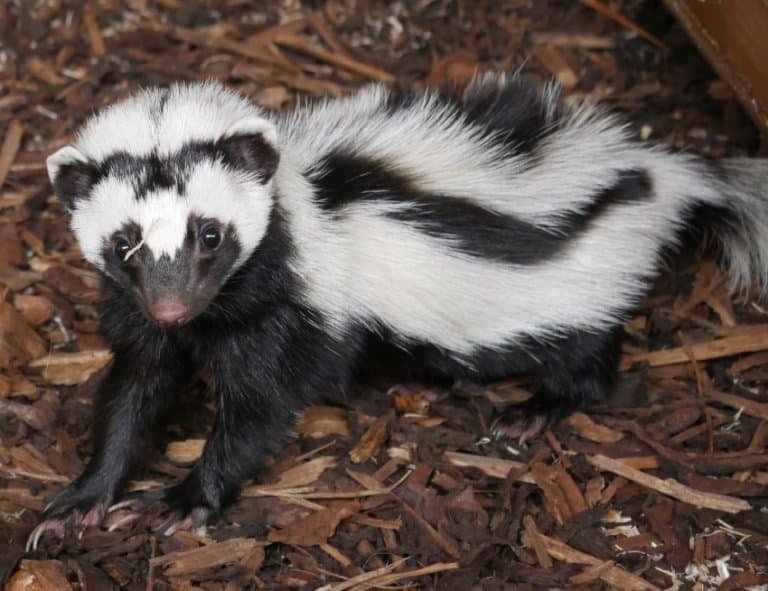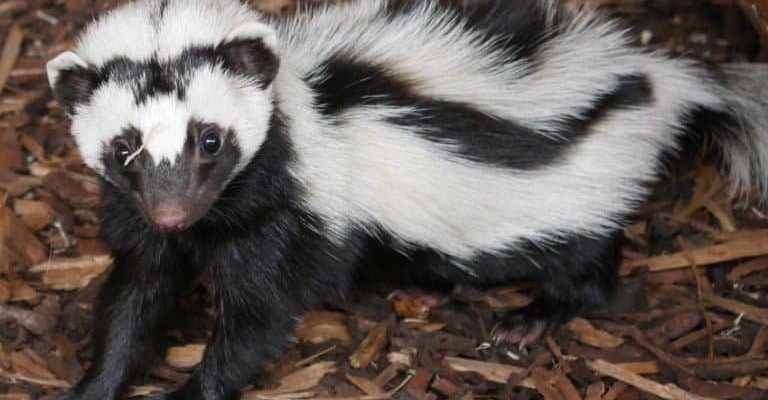
First off, the zorilla, also known as the **striped polecat**, is not a skunk, even though they share some similarities. Both have striking black and white markings and can spray a foul-smelling liquid when threatened. This isn’t just a small annoyance—it’s a serious defense mechanism. If you’ve ever had the unpleasant experience of standing too close to a skunk, you know how important it is to handle such encounters wisely. Understanding how to approach a situation with a zorilla could make all the difference.
Let’s dig into some tips and insights on what to do if you cross paths with one of these intriguing but potentially pungent critters.
Understanding Zorillas: Nature’s Little Tricksters
You might be wondering exactly what a zorilla is. Zorillas are small mammals belonging to the **weasel family**. With their sleek bodies and distinctive markings, they can be quite charming—until you remember their ability to unleash a stink that could clear a room. Typically, these creatures are nocturnal, so your chances of meeting one during the day are slim. However, nature has a funny way of surprising us.
These animals are generally shy and prefer to avoid confrontation. They roam around looking for insects, small rodents, and even fruits. Zorillas might not be on everyone’s radar, but they contribute to their ecosystems by controlling pest populations. They are like the small-town guardians of their habitat, working hard under the cover of night.
If you ever find yourself in their territory—like while hiking or camping—you should prepare for this unique encounter. It’s essential to understand their behavior and characteristics, so let’s dive deeper!
Spotting a Zorilla: Signs and Behaviors
So, how do you know if a zorilla is nearby? Look for a few telltale signs. First, keep an eye out for **tracks**. Zorillas have distinctive footprints with five toes on both their front and hind feet. If you see these tracks along a path, you might be in zorilla territory.
Next, listening is crucial. Zorillas communicate through a series of sounds, including whines, growls, and even hisses. If you hear something unusual in the bushes, take a moment to pause. It could be the little fellow trying to let you know it’s there.
And let’s not forget about the unmistakable smell. If you catch a whiff of something foul, it might be time to back away slowly. The zorilla’s spray is a natural defense mechanism, and you definitely want to avoid that experience.
What To Do If You See a Zorilla
Encountering a zorilla can raise your heart rate, but there’s no need to panic! Here’s what to do if you find yourself in the presence of one:
1. **Stay Calm**: It’s crucial to remain composed. Your reaction can influence the zorilla’s behavior. If you act erratic, it may feel threatened and spray. Take a deep breath.
2. **Back Away Slowly**: If the zorilla doesn’t seem spooked, it’s best to give it space. Back away slowly and quietly. Avoid sudden movements; think of yourself as a calm spectator in a wildlife documentary.
3. **Avoid Eye Contact**: Staring directly at an animal can be interpreted as a challenge. Give the zorilla some respect and let it know you’re not a threat by looking away.
4. **Don’t Corner It**: If the zorilla feels trapped, it’s more likely to defend itself. Make sure it has an escape route.
5. **Observe from a Distance**: If you can keep a safe distance, enjoy the moment! Zorillas are fascinating creatures. Just remember not to get too close.
What NOT To Do: Common Mistakes
While knowing what to do is essential, it’s equally important to understand what to avoid. Here are some common mistakes to steer clear of:
– **Don’t Chase It**: Chasing a zorilla can scare it, prompting it to spray. Remember, you’re not in a wildlife documentary, so leave the excitement to nature.
– **Avoid Loud Noises**: Shouting or making loud sounds can stress the animal. It might interpret this as a threat, leading to undesirable outcomes.
– **Don’t Try to Touch It**: Zorillas may look cute from afar, but they are wild animals. Trying to touch or get too close can provoke them.
Understanding Their Defense Mechanism
It might be hard to believe, but the zorilla’s spray can be more potent than a skunk’s. Similar to a magician pulling a rabbit from a hat, this little creature can produce a surprise that leaves its rivals feeling bewildered. The spray is concentrated and can cause irritation, making it a serious deterrent against predators.
When threatened, the zorilla will often *turn around* and present its rear as a warning—an understandable tactic in the wild. If the warning is ignored, it lets loose with that infamous spray. Have you ever experienced overwhelming smells? Imagine that times ten! If you ever find yourself in the line of fire, *immediate* fresh air is the best remedy.
Safety in Numbers: Traveling in Groups
If you’re planning to hike or explore areas where zorillas might roam, consider traveling in groups. There’s safety in numbers, and having friends can help ease the tension during unexpected encounters.
Plus, having others around can help with spotting the creatures from a distance. More eyes can mean more fun, as you can share the experience and watch out for one another. Just remember to keep the group calm and avoid startling the animals.
Conservation and Respect for Zorillas
Zorillas may not be on everyone’s radar, but they play an important role in their habitat. Respecting wildlife means understanding their importance in the ecosystem. By supporting conservation efforts, we can help maintain their populations and habitats.
If you do encounter one, consider how special that moment is. It’s a snapshot of nature, a reminder of the wild world we often forget about.
In the grand scheme of things, every encounter teaches us something valuable. So, if you ever find yourself face-to-face with a zorilla, embrace the experience. Just remember to keep your distance, respect its space, and enjoy the wild for what it is.
As you leave the woods behind, carry the story with you. The world is full of surprises, and sometimes the smallest creatures can leave the biggest impact.

